Books by Naoise Mac Sweeney
In this new volume, Jan Haywood and Naoíse Mac Sweeney investigate the position of Homer's Iliad ... more In this new volume, Jan Haywood and Naoíse Mac Sweeney investigate the position of Homer's Iliad within the wider Trojan War tradition through a series of detailed case studies. From ancient Mesopotamia to twenty-first century America, these examples are drawn from a range of historical and cultural contexts; and from Athenian pot paintings to twelfth-century German scholarship, they engage with a range of different media and genres.
Inspired by the dialogues inherent in the process of reception, the book adopts a dialogic structure. In each chapter, paired essays by Haywood and Mac Sweeney offer contrasting authorial voices addressing a single theme, thereby drawing out connections and dissonances between a diverse suite of classical and post-classical Iliadic receptions.
From the palaces of Homeric epic to the ancestral seat of Roman emperors, Troy in antiquity was a... more From the palaces of Homeric epic to the ancestral seat of Roman emperors, Troy in antiquity was a place couched in myth. But for nearly four millennia, Troy was also a living city, inhabited by real people. Troy today is therefore a site of major archaeological and historical significance. In the modern world, however, Troy has become as much a symbol as a site. From movies to computer viruses, from condom branding to reggae records, Troy is a word to conjure with. This book explores the significance of Troy in three areas: the mythic, the archaeological, and the cultural, and highlights the continuing importance of the site today.
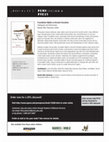
Throughout classical antiquity, origin stories were told across the ancient world in many differe... more Throughout classical antiquity, origin stories were told across the ancient world in many different ways: through poetry, prose, monumental and decorative arts, and performance in civic and religious rituals. Foundation myths, particularly those about the beginnings of cities and societies, played an important role in the dynamics of identity construction and in the negotiation of diplomatic relationships between communities. Yet many ancient communities had not one but several foundation myths, offering alternative visions and interpretations of their collective origins.
Seeking to explain this plurality, Foundation Myths in Ancient Societies explores origin stories from a range of classical and ancient societies, covering both a broad chronological span (from Greek colonies to the high Roman empire) and a wide geographical area (from the central Mediterranean to central Asia). Contributors explore the reasons why several different, sometimes contradictory myths might coexist or even coevolve. Collectively, the chapters suggest that the ambiguity and dissonance of multiple foundation myths can sometimes be more meaningful than a single coherent origin narrative. Foundation Myths in Ancient Societies argues for a both/and approach to foundation myths, laying a framework for understanding them in dialogue with each other and within a wider mythic context, as part of a wider discourse of origins.
This book examines foundation myths told about the Ionian cities during the archaic and classical... more This book examines foundation myths told about the Ionian cities during the archaic and classical periods. It uses these myths to explore the complex and changing ways that civic identity was constructed in Ionia, relating this to the wider discourses about ethnicity and cultural difference that were current in the Greek world at this time. The Ionian cities seem to have rejected oppositional models of cultural difference which set in contrast East and West, Europe and Asia, Greek and Barbarian, opting instead for a more fluid and nuanced perspective on ethnic and cultural distinctions. The conclusions of this book have far-reaching implications for our understanding of Ionia, but also challenge current models of Greek ethnicity and identity, suggesting that there was a more diverse conception of Greekness in antiquity than has often been assumed.
The concept of the community is vital to the way we understand human societies both past and pres... more The concept of the community is vital to the way we understand human societies both past and present, and the last decade has seen widespread interest in communities from both the popular and academic spheres.
The concept is also central to archaeology, where the relationship between sites and communities remains controversial. Naoíse Mac Sweeney aims to take the debate one step further, setting out a comprehensive framework for the archaeological investigation of community identity, encompassing theoretical approaches for its conceptualization, practical methodologies for its investigation, and detailed case studies in Anatolia to test and illustrate its arguments.
The attached download is a sample of the book, consisting of chapters addressing the theorisation of community both in archaeology and in the wider social sciences.
Papers by Naoise Mac Sweeney
The file associated with this record is under embargo until 36 months after publication, in accor... more The file associated with this record is under embargo until 36 months after publication, in accordance with the publisher's self-archiving policy. The full text may be available through the publisher links provided above.
Traditional accounts of the foundation of the Ionian cities of Asia Minor posit a large-scale mi... more Traditional accounts of the foundation of the Ionian cities of Asia Minor posit a large-scale migration from the Greek mainland led by Athenian colonists. This article reviews the historical, archaeological, and linguistic evidence for the origins of the Ionian cities and offers a new analysis of the substantial body of later literary material written in Greek and Latin.This analysis brings into sharper focus the complex patterns of mobility and local settlement that contributed to the foundation of the cities, as well as the equally complex sociopolitical concerns that shaped the origins of their Ionian identity.
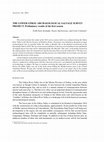
This article presents the results of the 2013 survey season which was conducted along the Göksu R... more This article presents the results of the 2013 survey season which was conducted along the Göksu River Valley in the Mersin Province of Southern Turkey. The project was initiated to document as many archaeological sites as possible before the valley is fl ooded, due to the planned construction of the Kayraktepe Dam in 2016. The two-week season enabled us to discover several unknown sites and further investigate known sites that will be submerged under the dam lake. This year's work mainly focused on the alluvial plains where the Ermenek Çay and the Kurtsuyu Rivers join the Göksu River. The discovery of a pre-Classical settlement at Damtepe and the presence of a Chalcolithic level at Attepe were the most signifi cant discoveries of the season. A brief summary of the fi eld season is provided here including sections about the investigated sites and a discussion about local settlement patterns. The 2013 season of this Bitlis Eren University project, which is conducted in collaboration with the University of Leicester, was funded by the British Institute of Archaeology at Ankara. We hope to continue surveying this important area in 2014, as throughout history the Göksu Valley was one of the main routes linking the Mediterranean coast to the Central Anatolian Plateau. We may also consider starting excavations at one or two major sites in the coming years, if the necessary funding is provided by the General Directorate of State Hydraulic Works of Turkey.
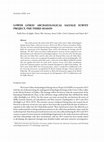
This article presents the results of the 2015 season of the Lower Göksu Archaeological Salvage Su... more This article presents the results of the 2015 season of the Lower Göksu Archaeological Salvage Survey Project, which has run since 2013 in the Mersin Province of southern Turkey. This year, the team continued documenting archaeological sites and monuments in the valley before the construction of the Kayraktepe Dam, which will submerge the heritage and the landscape. The 2015 season was almost totally devoted to intensive surveys conducted in two alluvial plains with relatively rich archaeological deposits: one in the area where the Kurtsuyu River joins the Göksu River; and the other where the Ermenek River meets the Göksu River. These intensive surveys were accompanied by geophysical studies and aerial photography. This article presents a summary of the field season, a discussion of the different fieldwork methods that were applied and tested, the results of the intensive surveys, and a fresh consideration of the local settlement patterns and their temporal development in light of the findings. The 2015 season of this Bitlis Eren University project, which is conducted in collaboration with the University of Leicester, was funded by the British Academy through a Newton Advanced Fellowship. The survey project will continue in 2016 with the generous support of the British Academy and we hope to start excavating the site of Çingentepe in 2017 in collaboration with the Silifke Museum.
in Ç. Maner, K. Kopanias and N. Stampolidis (eds) Nostoi: Indigenous Culture, Migration and Integration in the Aegean Islands and Western Anatolia during the Late Bronze Age and Early Iron Age. Istanbul: Koç University Press., 2015
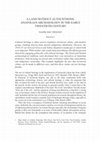
In M. Seymour, C. Glatz, A. Fletcher, R. Matthews, S. Simpson and J. Tubb (eds) Proceedings of the International Congress on the Archaeology of the Ancient Near East.. Band 7. Proceedings of the 7th ICAANE 12 April - 16 April 2010, British Museum and UCL, London. Wiesbaden: Harrassowitz, 2012
Cultural heritage is often used to legitimise territorial claims, with modern groups claiming des... more Cultural heritage is often used to legitimise territorial claims, with modern groups claiming descent from ancient indigenous inhabitants. However, the 1919-23 war between Greece and Turkey disputed a landscape in which both were migrants. While neither side could claim autochthony, this did not prevent them from engaging politically with cultural heritage. The Greek and Turkish archaeological traditions each developed their own narratives of Anatolian prehistory, both focusing on arrival and civilisation rather than autochthony and indigenous ownership. This example highlights the fact that territorial claims can be made in different ways, and that these claims can use heritage flexibly.
in K. Duisterrnaat and I. Regulski (eds) Intercultural Contacts in the Ancient Mediterranean. Orientalia Lovaniensia Analecta 202. Peeters. p67-77, 2011
OpenDemocracy, 'Lest We Forget' series, 2010
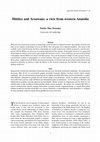
Anatolian Studies 60: 7-24, 2010
There has been much recent research in archaeology on the dynamics of imperial systems, and valua... more There has been much recent research in archaeology on the dynamics of imperial systems, and valuable work has been done on the complex relationships between the Hittite state and groups on its imperial periphery. The nature of the available source material means that these relationships are usually studied from a Hittite perspective, and that interactions with the Hittites are often seen as centrally important for these groups. In this paper, however, it is argued that archaeological evidence can be used to gain insight into alternative views – views which may not necessarily privilege relationships with the Hittites over those with other groups. One well-documented example of such a group is Arzawa, a quarrelsome coalition of principalities in western Anatolia. This paper will focus on the western Anatolian site of Beycesultan, caught between the Hittite and Arzawan heartlands. It will show that people at Beycesultan did not define themselves primarily in relation to either the Hittites or the Arzawan confederacy, but had their own dynamic and shifting world-view.İmparatorluk sistemlerinin dinamikleri konusunda pek çok yeni arkeolojik araştırmalar yapılmiştır. Bu araştırmalara dayanarak, Hitit devleti ile çevresindeki gruplar arasındaki karmaşık ilişkileri inceleyen birçok değerli çalışma yapılmıştır. Mevcut olan kaynakların doğası gereği, bu ilişkiler genellikle Hitit bakış açısıyla incelenmekte ve çoğunlukla Hititlerle etkileşimin bu gruplar için çok önemli olduğu varsayılmaktadır. Ancak, bu makale arkeolojik kanıtların farklı bakış açılarına sahip olabilmek için kullanılabileceğini savunmaktadır – ki bu bakış açısı, Hititlerle olan ilişkilerinin bu gruplara ayrıcalık sağlaması gerekmediğidir. Bunlar arasında iyi belgelenmiş olan bir örnek de, batı Anadolu'daki savaşçı beyliklerin koalisyonundan oluşan Arzawa grubudur. Bu makale batı Anadolu'daki Hitit ve Arzawa merkezlerinin arasında sıkışmış Beycesultan yerleşimi üzerinde yoğunlaşmaktadır ve aslında Beycesultan halkının kendilerini öncelikli olarak Hitit veya Arzawa birliklerine ait görmediklerini, farklı dinamiklere ve değişken bir dünya görüşüne sahip bir toplum olarak gördüklerini ortaya koyacaktır.
Journal of Mediterranean Archaeology 22.1: 101-126, 2009
Papers of the Institute of Archaeology 15: 53-66, 2004
Media by Naoise Mac Sweeney

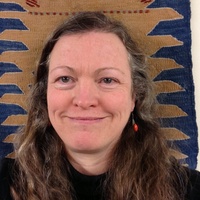
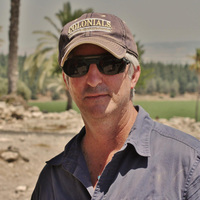

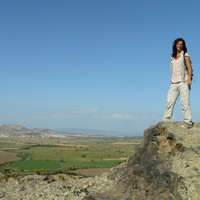



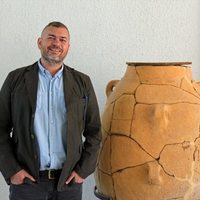


Uploads
Books by Naoise Mac Sweeney
Inspired by the dialogues inherent in the process of reception, the book adopts a dialogic structure. In each chapter, paired essays by Haywood and Mac Sweeney offer contrasting authorial voices addressing a single theme, thereby drawing out connections and dissonances between a diverse suite of classical and post-classical Iliadic receptions.
Seeking to explain this plurality, Foundation Myths in Ancient Societies explores origin stories from a range of classical and ancient societies, covering both a broad chronological span (from Greek colonies to the high Roman empire) and a wide geographical area (from the central Mediterranean to central Asia). Contributors explore the reasons why several different, sometimes contradictory myths might coexist or even coevolve. Collectively, the chapters suggest that the ambiguity and dissonance of multiple foundation myths can sometimes be more meaningful than a single coherent origin narrative. Foundation Myths in Ancient Societies argues for a both/and approach to foundation myths, laying a framework for understanding them in dialogue with each other and within a wider mythic context, as part of a wider discourse of origins.
The concept is also central to archaeology, where the relationship between sites and communities remains controversial. Naoíse Mac Sweeney aims to take the debate one step further, setting out a comprehensive framework for the archaeological investigation of community identity, encompassing theoretical approaches for its conceptualization, practical methodologies for its investigation, and detailed case studies in Anatolia to test and illustrate its arguments.
The attached download is a sample of the book, consisting of chapters addressing the theorisation of community both in archaeology and in the wider social sciences.
Papers by Naoise Mac Sweeney
Media by Naoise Mac Sweeney
Inspired by the dialogues inherent in the process of reception, the book adopts a dialogic structure. In each chapter, paired essays by Haywood and Mac Sweeney offer contrasting authorial voices addressing a single theme, thereby drawing out connections and dissonances between a diverse suite of classical and post-classical Iliadic receptions.
Seeking to explain this plurality, Foundation Myths in Ancient Societies explores origin stories from a range of classical and ancient societies, covering both a broad chronological span (from Greek colonies to the high Roman empire) and a wide geographical area (from the central Mediterranean to central Asia). Contributors explore the reasons why several different, sometimes contradictory myths might coexist or even coevolve. Collectively, the chapters suggest that the ambiguity and dissonance of multiple foundation myths can sometimes be more meaningful than a single coherent origin narrative. Foundation Myths in Ancient Societies argues for a both/and approach to foundation myths, laying a framework for understanding them in dialogue with each other and within a wider mythic context, as part of a wider discourse of origins.
The concept is also central to archaeology, where the relationship between sites and communities remains controversial. Naoíse Mac Sweeney aims to take the debate one step further, setting out a comprehensive framework for the archaeological investigation of community identity, encompassing theoretical approaches for its conceptualization, practical methodologies for its investigation, and detailed case studies in Anatolia to test and illustrate its arguments.
The attached download is a sample of the book, consisting of chapters addressing the theorisation of community both in archaeology and in the wider social sciences.